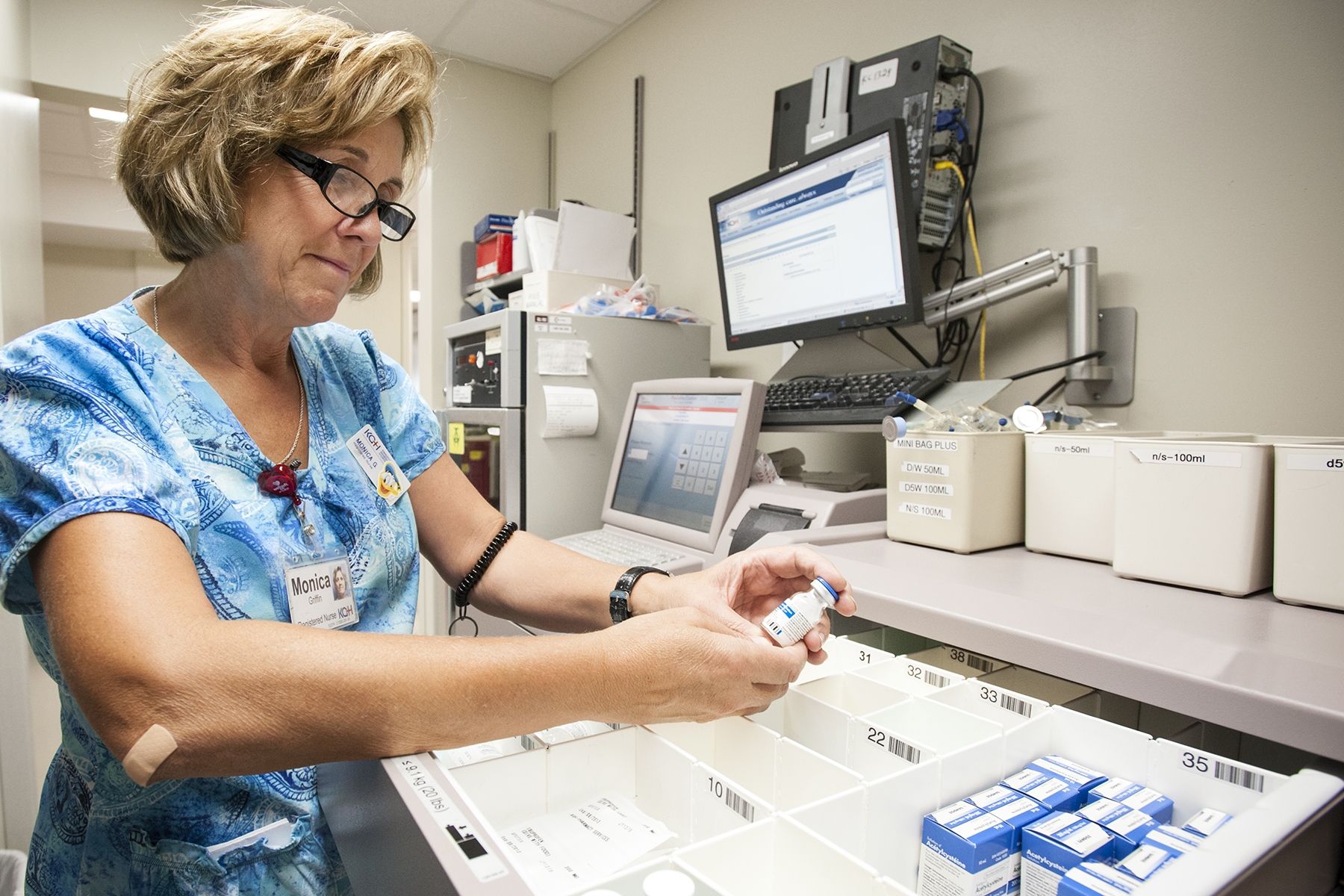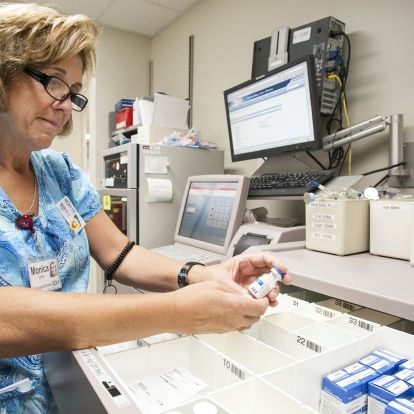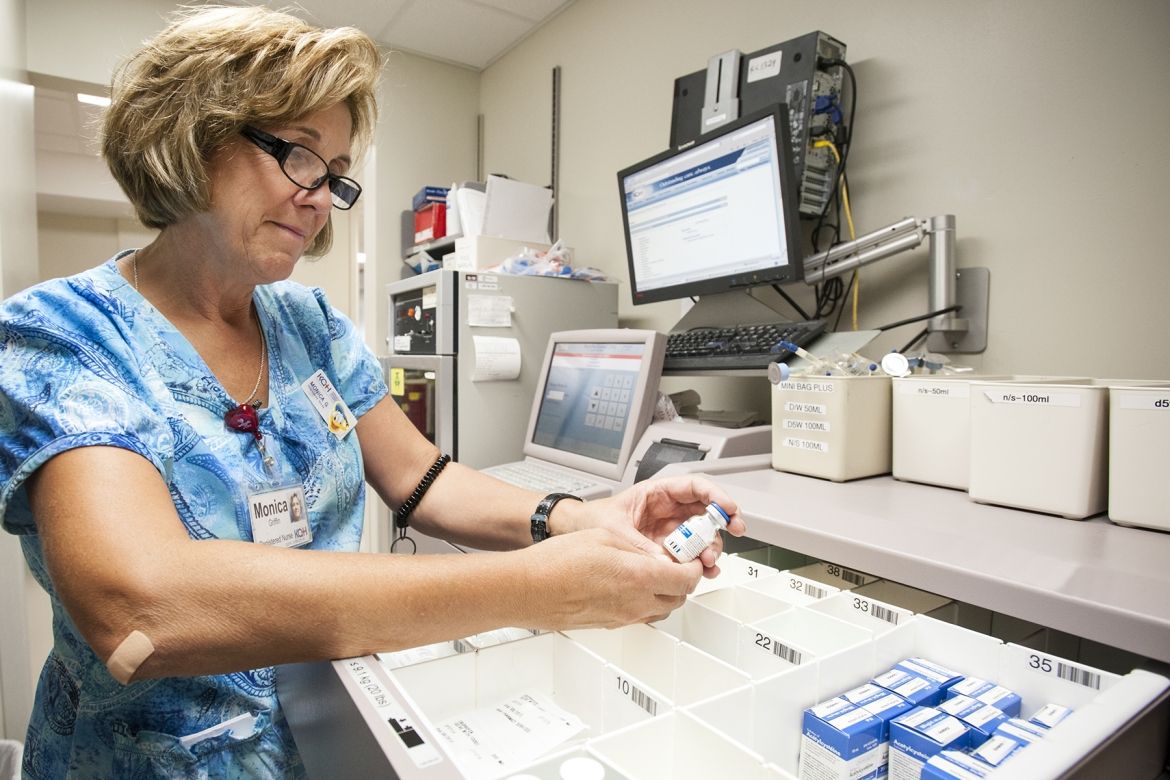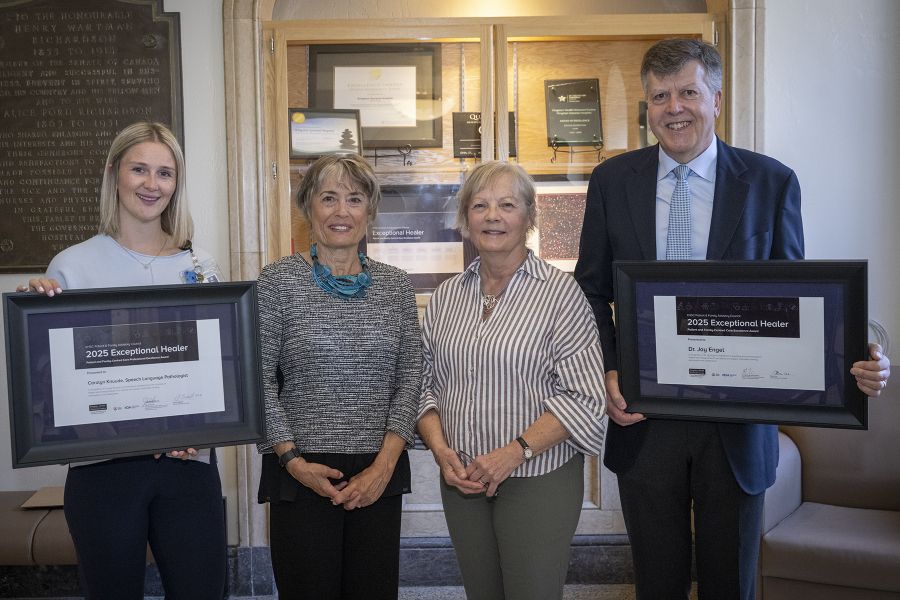
Kingston General Hospital is moving ahead with a new system that will improve the way medications are transported and stored in our patient care areas. At the centre of it all will be some new automated medication dispensing cabinets.
"This is a very exciting investment in technology for our hospital," says Alan Smith, Co-Director of our pharmacy department. "It's been a long time coming and it is going to do a lot to improve the efficiency and security of our distribution system."
For starters, the automated cabinets will replace the many shelves and cupboards that currently store drugs on our inpatient units. Each cabinet will have several drawers able to hold a wide range of medications and each will be connected directly to the pharmacy department by a computer system. The new cabinets will replace four similar cabinets that have been successfully operating in our emergency department since 2007.
"This new automated system is going to speed things up for everyone and, most importantly, it will help front-line staff deliver medication to their patients a lot faster," says Project Manager Marion MacInnis.
Here's how. Staff administering drugs to patients will be able to get what they need by walking to the cabinet and signing in by swiping their fingerprint and entering a password. From there, they can open the proper drawer using a touch screen to select the patient and the drug needed. And there will always be enough medication inside, as the software program will alert Pharmacy when supplies are running low. Also, thanks to the security of the locked drawers, pharmacy will now be able to expand the kinds of drugs kept on each floor.
"Nurses and others have been asking for a long time to have a greater variety of drugs available to them so they can access them quickly for their patients. Now we'll finally be able to accommodate this," says Smith. "It will also be possible to track exactly who took a drug out, at what time, and for which patient."
This feature will also help our decision support department improve its case-costing calculations, as the computer system will add up all the drugs that go to a particular patient.
One thing that won't be changing with the new system is the order review process. The pharmacy department will still check and approve each drug order before it is released to be given to the patient.
But the new system will allow pharmacy to do away with the time-consuming job of assembling the daily unit dose cart exchange. This requires a team in pharmacy to put together a small cassette for each patient containing the drugs they are expected to need for the next 24 hours. The cassettes are then loaded onto the cart which is taken to the units by our porters. But now, thanks to the big and secure cabinets, most of those drugs will already be stored on the floor.
"These electronic medicine cabinets are truly 'nurse friendly' in my opinion," says Registered Nurse (RN) Janice Spivey, who was involved in the selection process for the new machines. "They are easy to use, quick to respond as needed, and operate smoothly, quietly and efficiently and that will translate directly into less medication and treatment wait times for our patients."
Another benefit for nursing teams will be the elimination of the narcotic counts they must complete at the end of their shifts, as the system will keep track of everything for them. And if a drug does get misplaced during a shift, nurses and other authorized caregivers will know about it right away, as the computer will tell them how many drugs should still be in the drawer when they open it. This will allow them to investigate any discrepancies right away.
"It's a big investment for KGH but it'ís going to add up to a faster, safer and more secure system," says Smith. "The goal now is to have the first cabinet up and running later this fall."
To that end, a steering committee has recently been set up to help with the implementation. Some construction will be required to install the new cabinets as the creation of an education program for staff.





